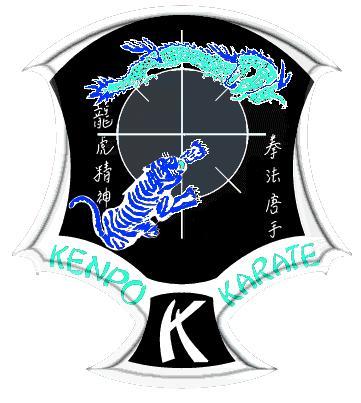
 The scope of this section is for training ideas as they apply to Kenpo technique. American Kenpo technique is more of an evolution of motion applied to the human physical structure. Regardless of size, American Kenpo augments the capabilities of an individual through tailoring, thereby negating the notion of forcing a person's mechanics to a particular technique. The information contained within is soley our own, you may or may not agree with the technical content. We do, however, always welcome comments and constructive criticism. 
KENPO STRATUM: LAYERS OF DIVERSITY AND INGENUITY Many say that American Kenpo has deleted too many techniques from it's curriculum. But how many techniques do you need? Mr. Parker often stated that he would rather have 10 moves he could fight with, than 100 techniques that fight him. It is not the number of techniques which are important, but only the relevant moves one can apply efficiently, expediently, and without hesitation. This is where the Master Key Basics, the Master Key Techniques and the Rearrangement Concept come into play.
Next we have the assertion that American Kenpo is too brutal in terms of technical applications. While it is true that American Kenpo technique can appear aggressive from the outside, the practitioner acknowledges that errors can occur while employing a response. Therefore, we must calculate misses and what if's through the technical flow of movement as contact is made with the attacker's body. By taking this approach the Kenpoist dismisses the idea of disengaging from a conflict, only to have to regroup after a failed series of movements. This tactical approach would force him to re-insert himself into another fighting scenario with unpredictable circumstances. Additionally, this would also have disastrous consequences if you were to engage multiple attackers as well. Another important facet within Kenpo's technical applications is target awareness. A Kenpoist's percussion maneuvers thrive on target point knowledge and target acquisition. This, in turn, brings us to anatomical reactivity. This pertains to the physical reaction of the human body once a natural or mechanical weapon makes impact. The angle of your natural weapon, the value of energy applied, and speed can determine the level of response on your attacker's body. Such a reaction is generally proportionate and equal to the amount of energy applied at the given point of contact. Therefore, you will have to calculate your next strike based on this information in order to manipulate the attacker effectively.
|

Reverse Motion Returning Motion Rhythmic Patterns / Rhythmics Complementary Angles Contouring Rebounding Fitting |

If you have clicked on the items above you can begin to visualize the parameters of Kenponic movement. In addition to these, dynamic tensity / release, orbital compression and pulse-beat modulation are utilized to maintain “explosive pressure” on an opposing physical body. Lets take the following example of a simulated technique against a right step-through punch. Set1: Step to 11 o’clock with your left leg to form a neutral bow. Simultaneously execute a left inward parry followed by a right outward parry. Set2: As the right parry chambers near your right shoulder, staying as a positional check, continue the motion of the left hand clockwise for a back knuckle strike to the ribs. Rebound the left hand off of the body in a clockwise orbit to your right shoulder for a positional check. As the left hand travels clockwise and reaches a 10 o’clock spot in the arc, strike inward with the right hand for a vertical punch to ribs. As you execute the right punch shift into a forward bow. Set3: As the right hand makes contact maintain penetration impact so it forms a transitory striking check. Collapse inward as you shuffle in (as needed)for an inward horizontal elbow strike to the ribs. We will stop at this point and briefly analyze this series of movements. Both arms follow clockwise orbital patterns on a vertical and horizontal plane of flight. The initial foot maneuver does not follow orbital patterns, but an angle of deviation to veer off of the centerline. From the moment you step off the line you begin to manifest power through spheral paths of action. What we need to examine is how we can alter the orbital value, utilizing the aforementioned concepts and principles, to increase speed and penetration values. In the near future we will take a closer look and provide illustrations to improve technique.
|

First we have the quadrant zone concept that primarily deals with the defense of your body and all relevant target zones. There is the division of height, width and depth zones into two areas. You then superimpose a verticle rectangle over the height and width zones to create four quadrants (also known as gates). The subsequent connection of these quadrants produces what is called a centerline that runs from head to toe. All movements should be within close proximity of this line, and to help with this, utilize the outer rim concept and anchoring. And why you may ask?. One, you preclude any over-extending or over-committing movements while reducing the probability of openings in your personal defense. Second, anchoring the elbows inward allows your hands to have direct centerline protection. All of this collectively restricts the angular and linear lines of attack by forcing him to take an outer path of action (an increased distance that requires time). Another principle that is central to the centerline theory is clearing. This involves the diverting of strikes from making contact, and the sweeping of a path that will guarantee clear passage for your own offensive action. Every action, whether it's offensive or defensive, will only be effective if the centerline is clear and unobstructed. 
|